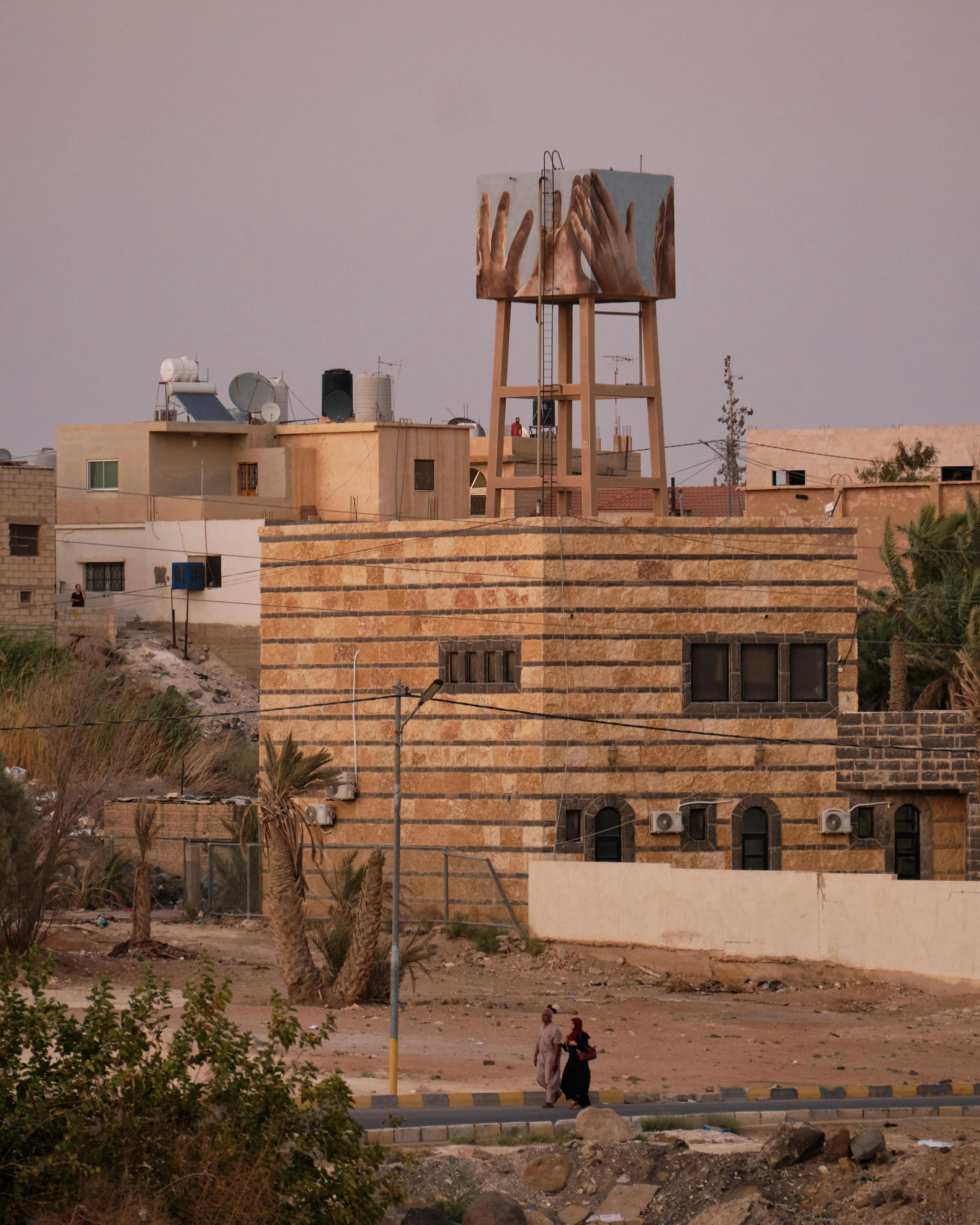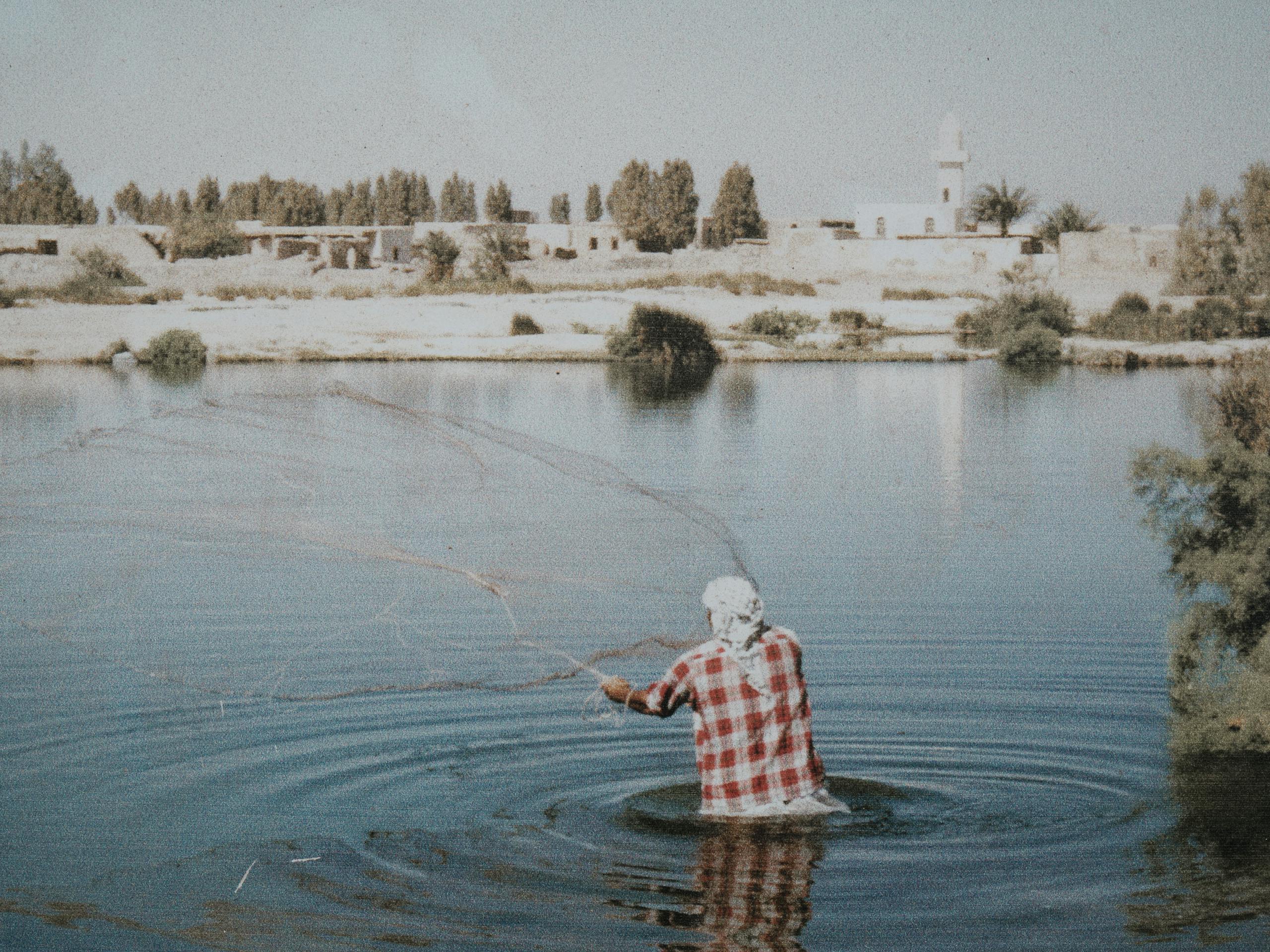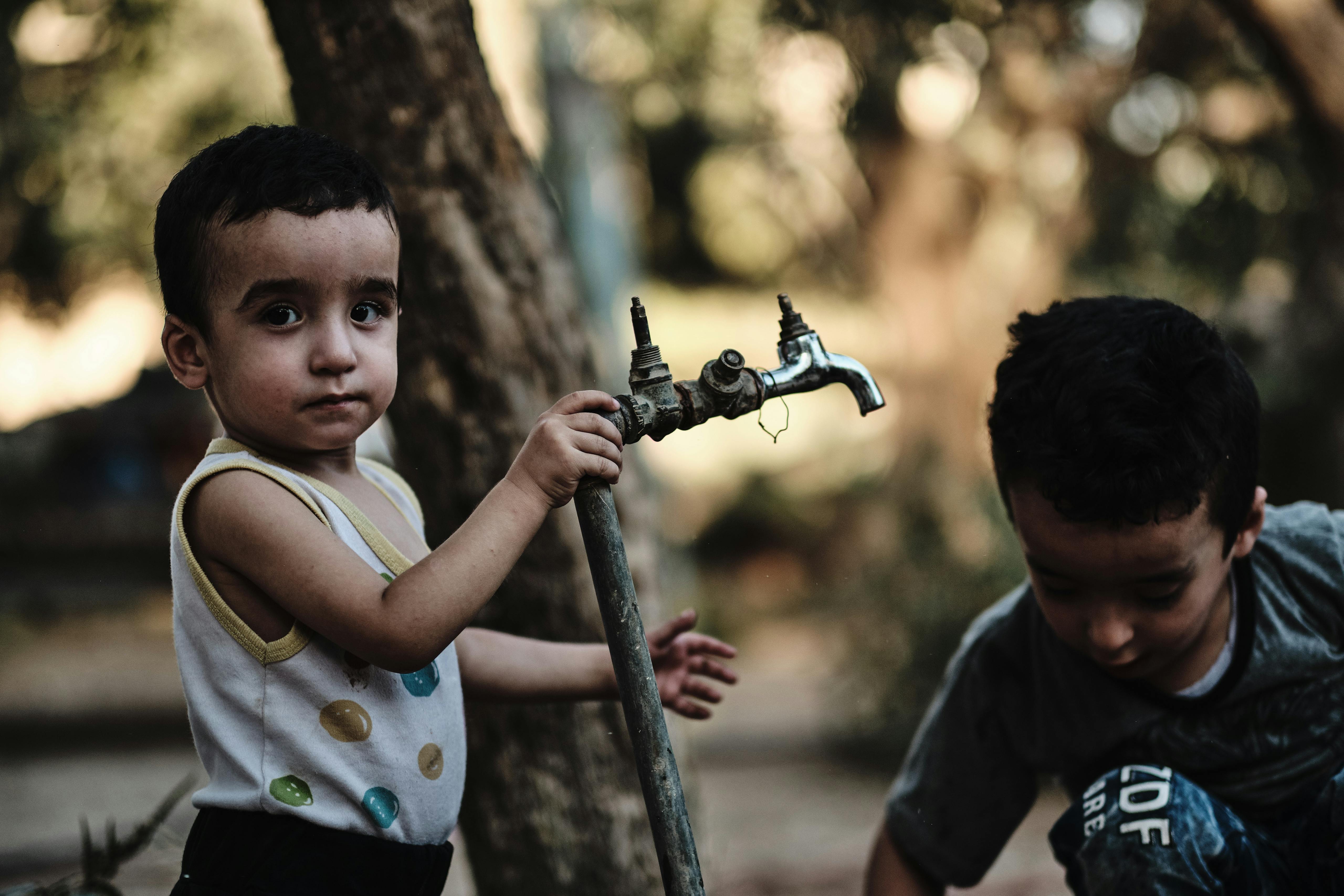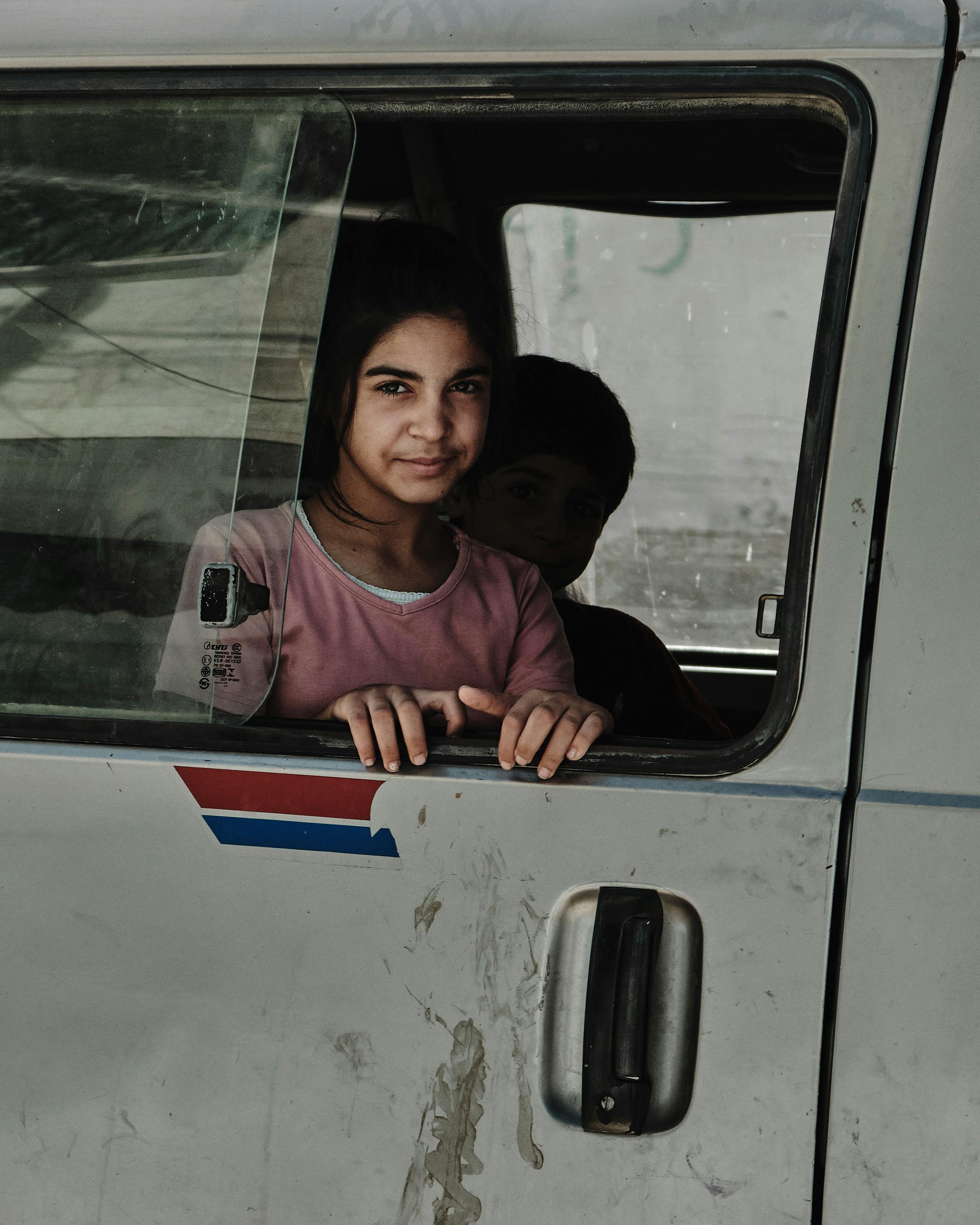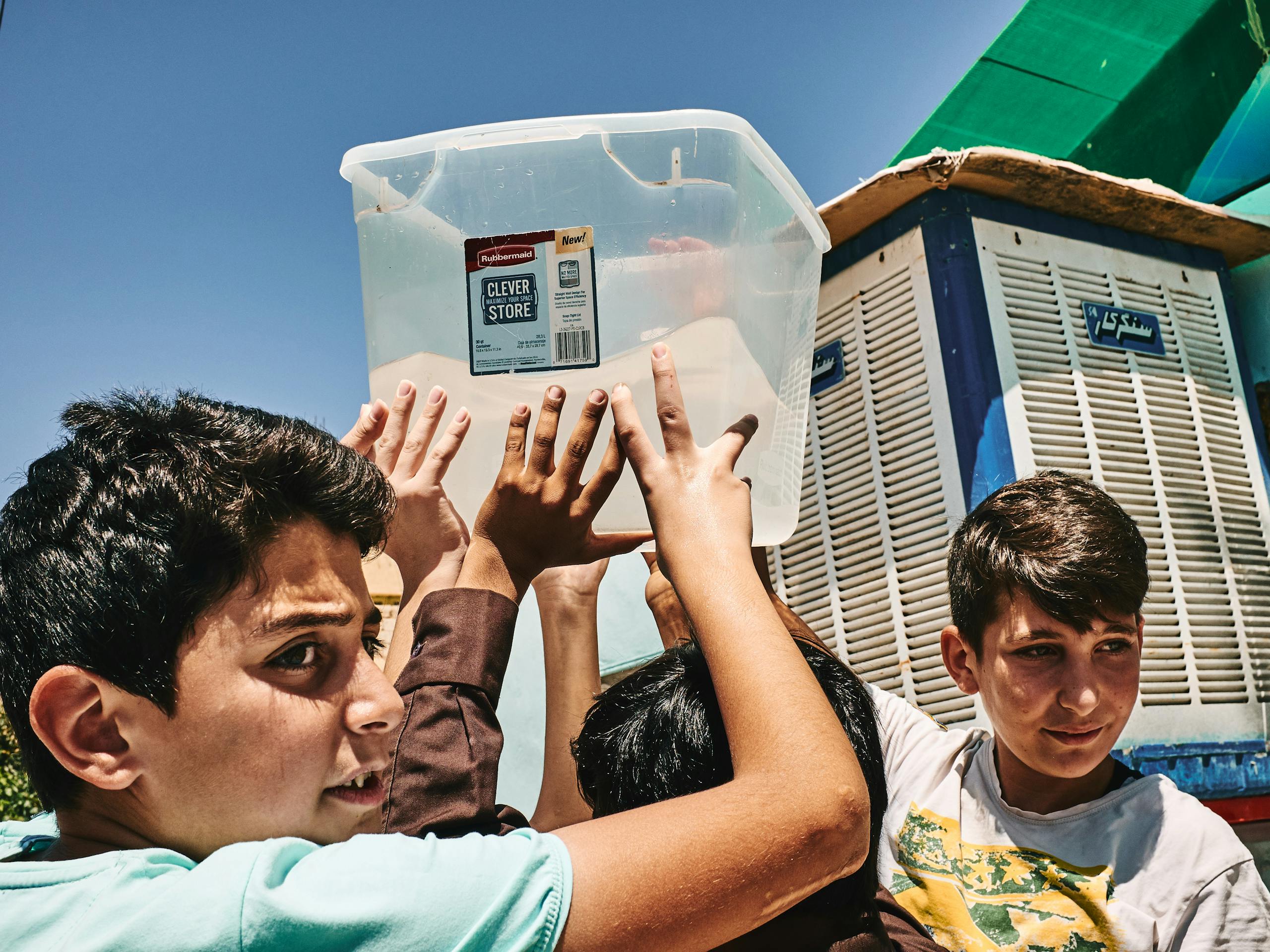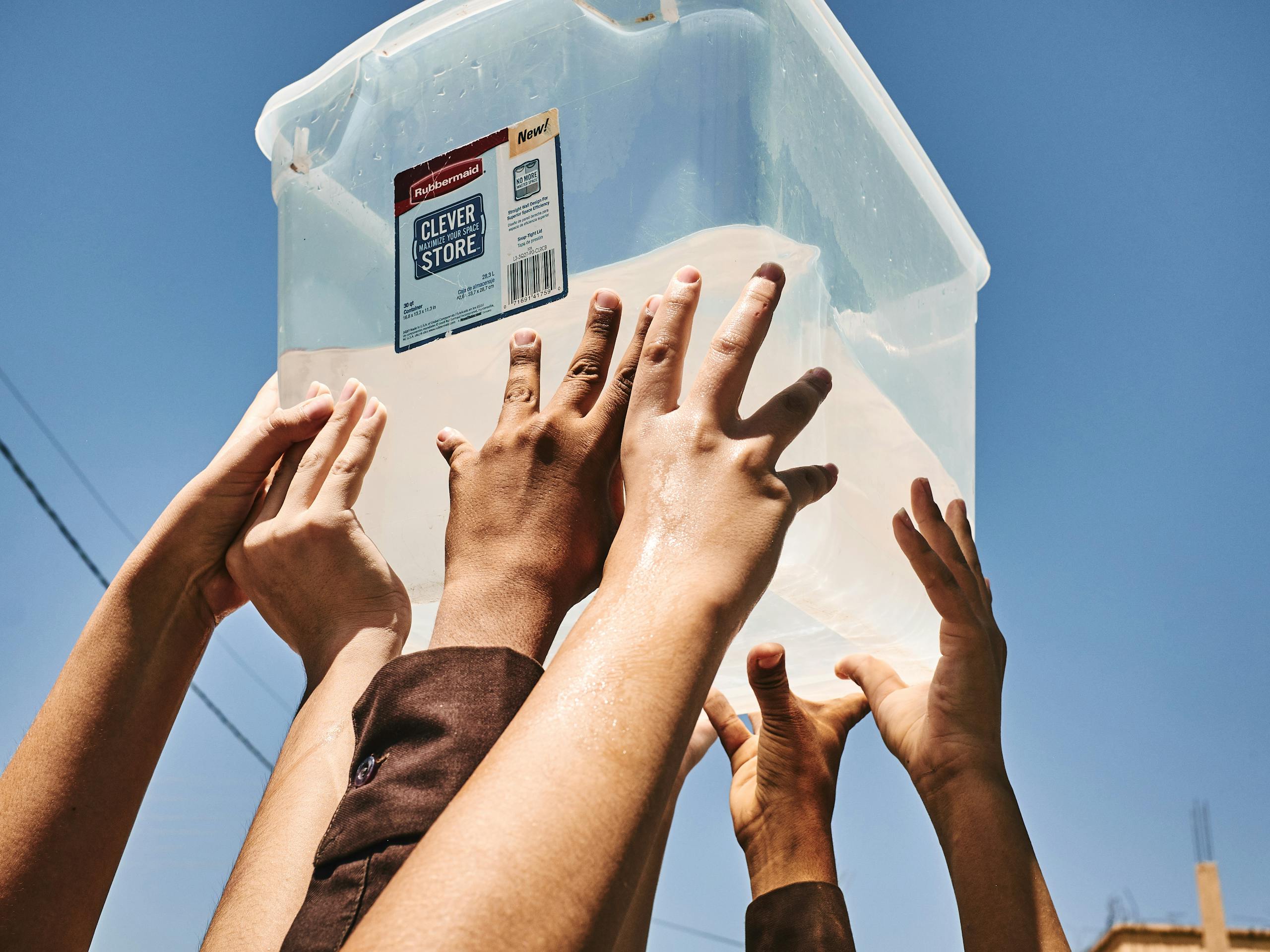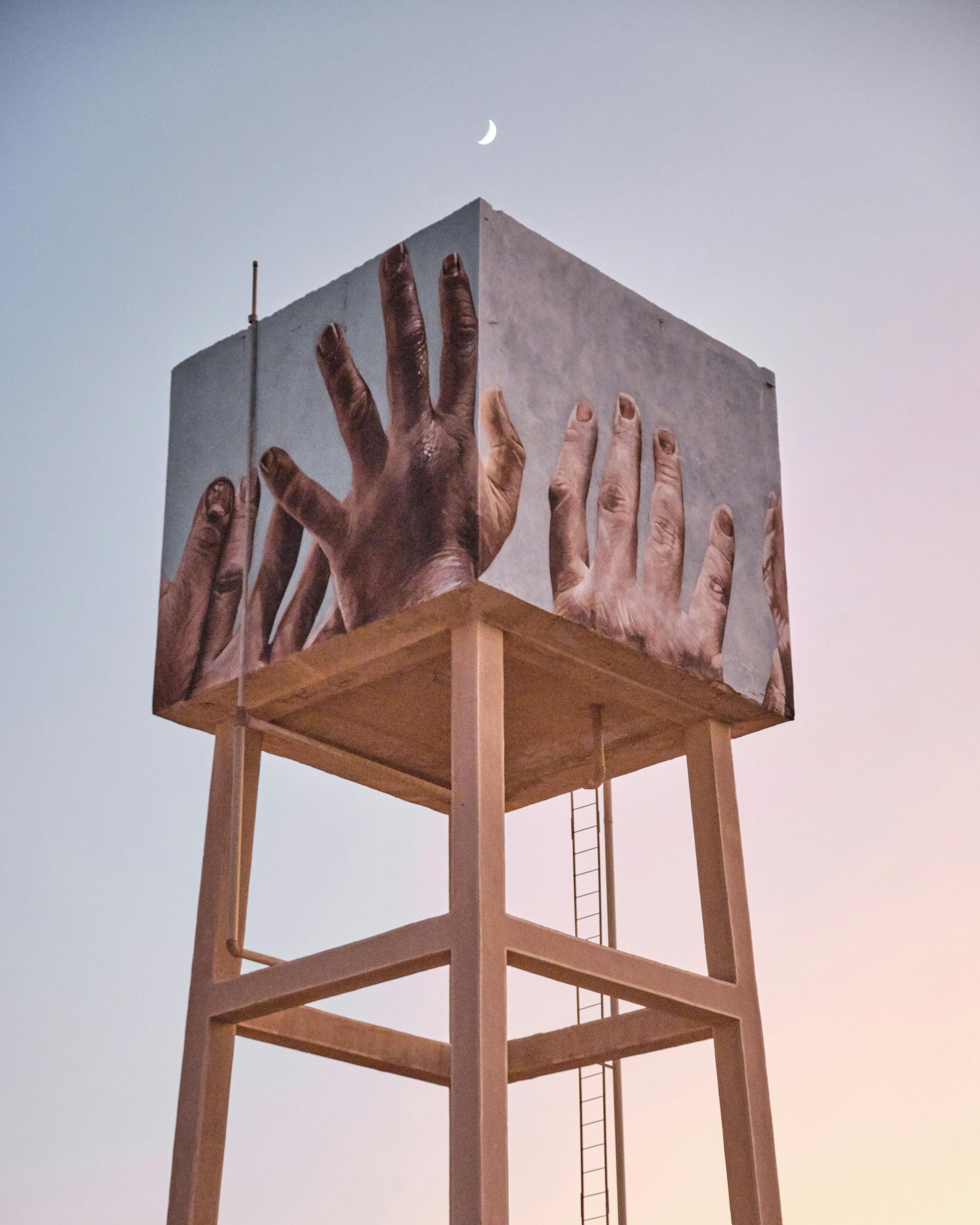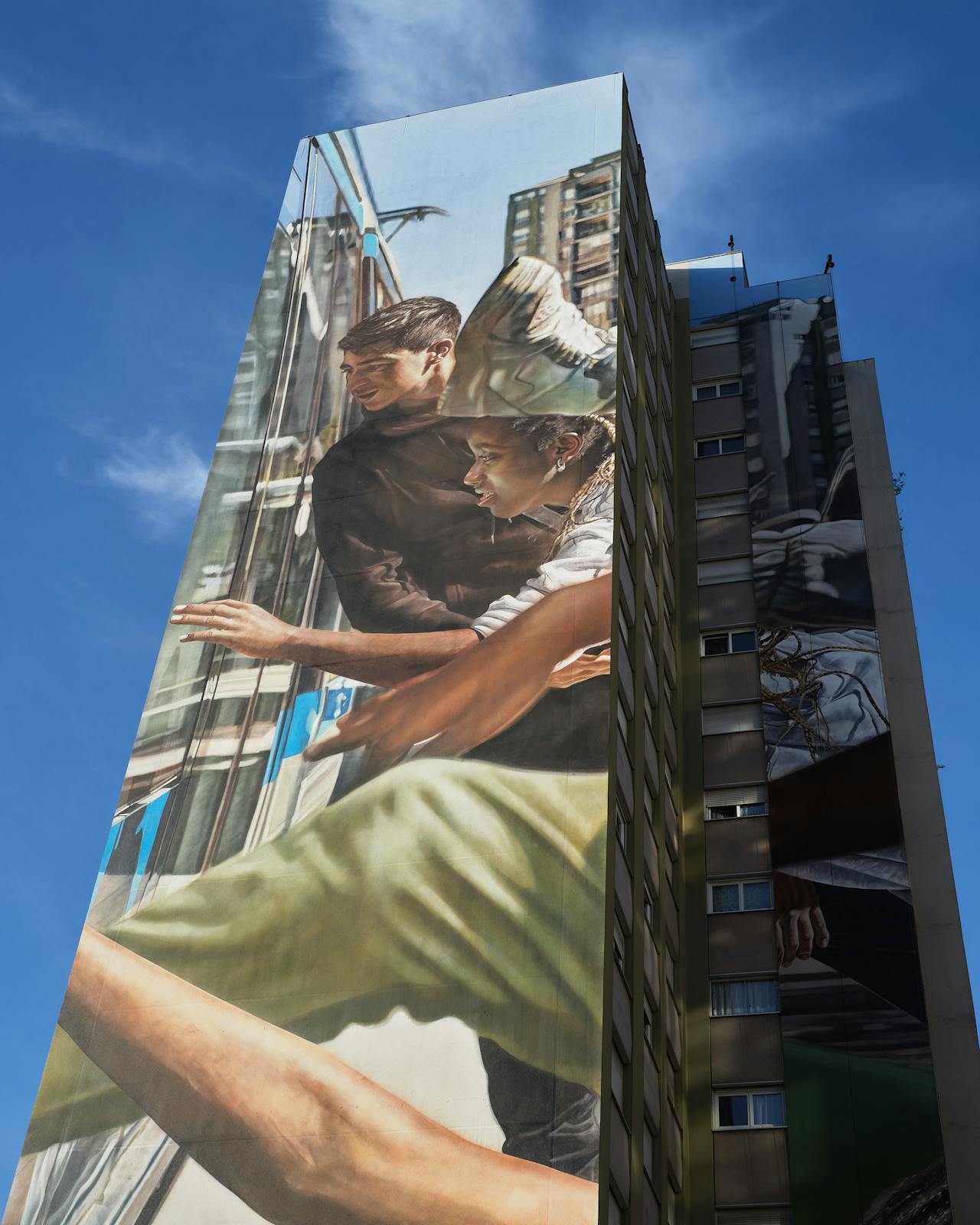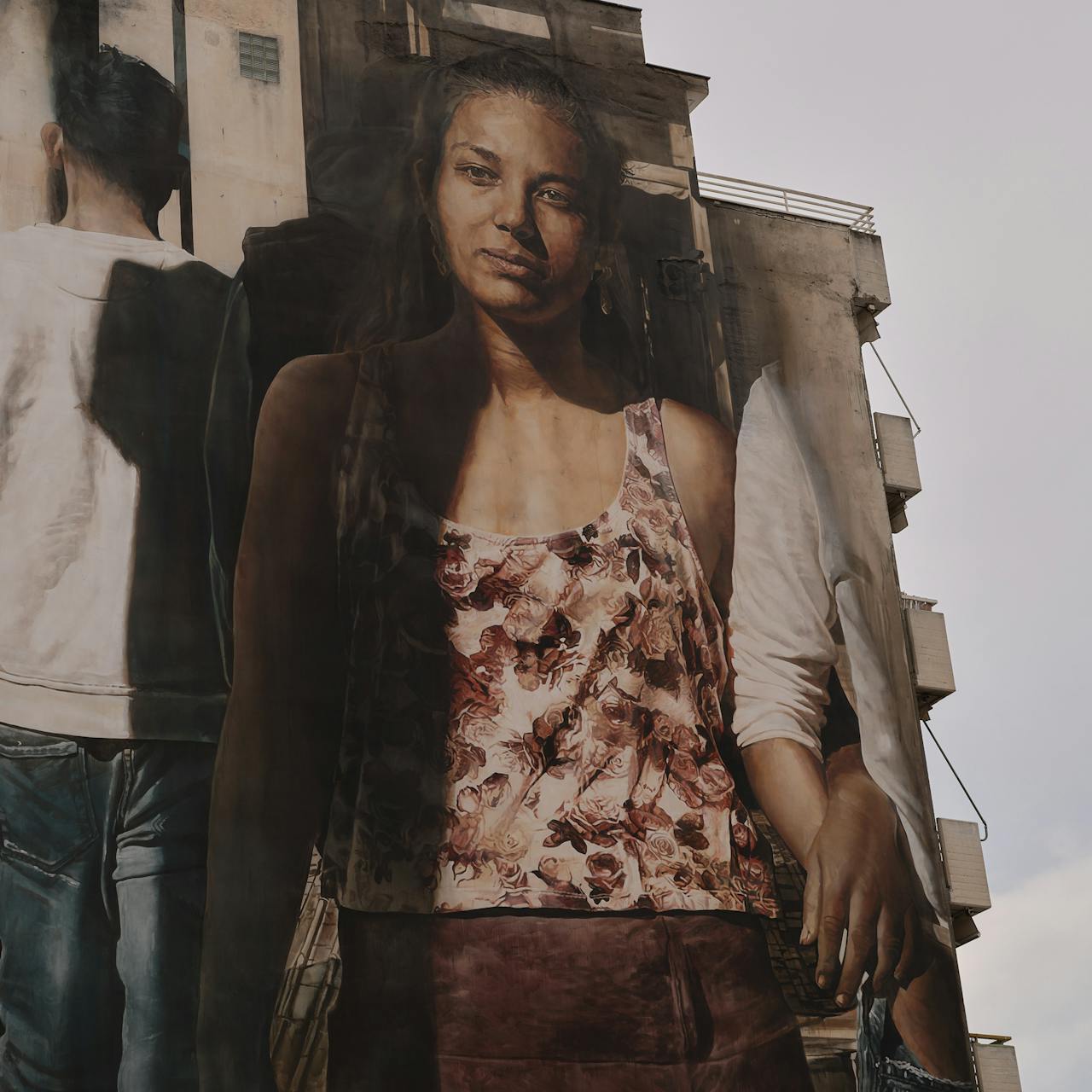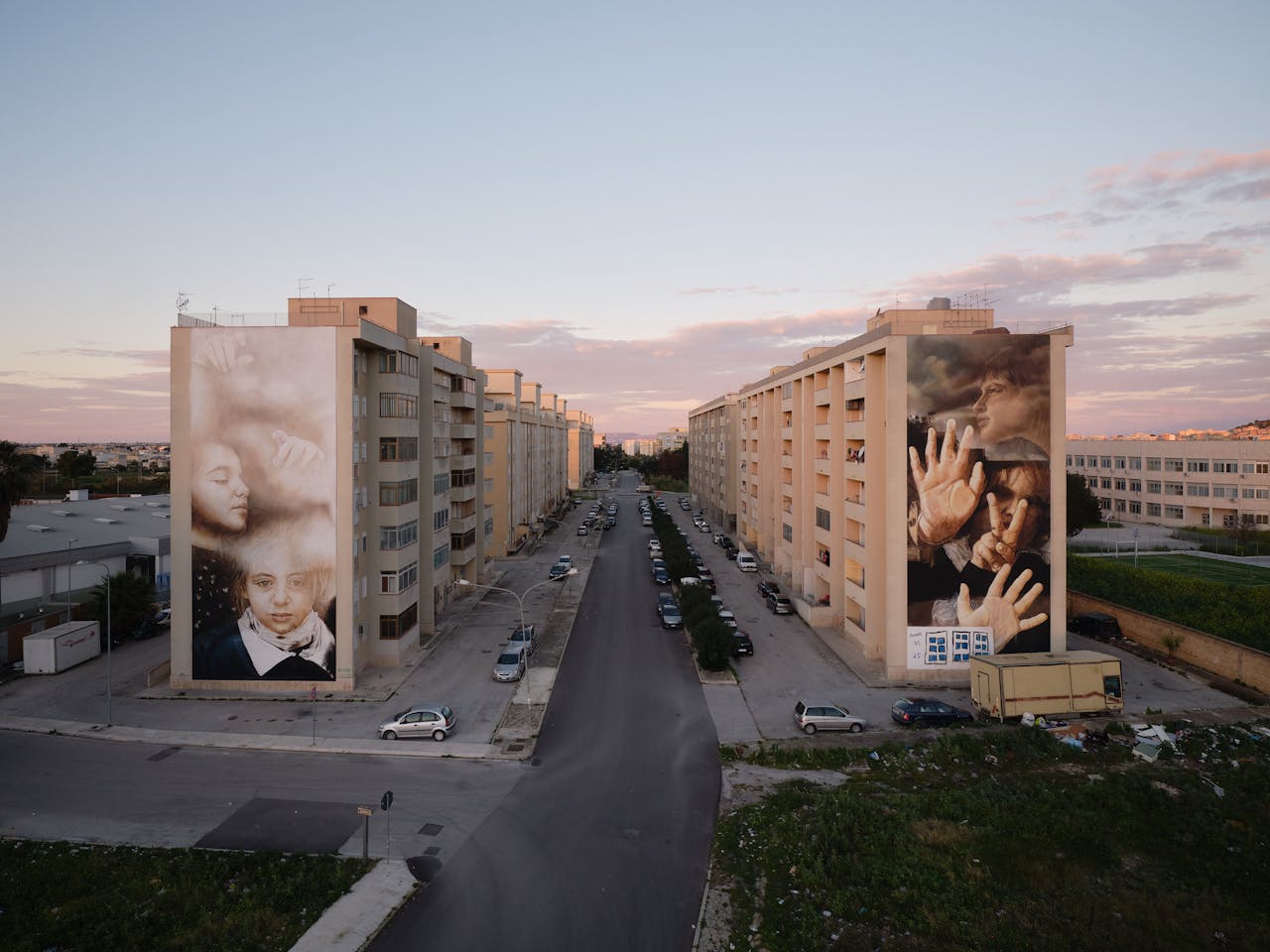Hold Water I
Azraq, Jordan,
2019
Hold Water I, Azraq, Jordan. August 2019 Photograph: Guido van Helten
Installed on a water tower in the small community of Azraq, Jordan, this project sought to create awareness on both the history and future of water use and conservation practices in Jordan.
Text by Seanna van Helten
Project Details
Project
Hold Water ILocation
Azraq, JordanCommissioner
aptART for Mercy Corp and USAIDAl-Azraq is situated in the eastern desert of Jordan, 100 kilometres east of the capital, Amman, and 70 kilometres from the Saudi border. The direct Arabic translation of the name Al-Azraq is ‘blue’ – a poetic reference to the area’s renown since ancient times for its glorious natural oasis and abundant water supply. The Azraq wetland, an area of pools and streams surrounded by tall grasses, bullrushes and reeds, is one of Jordan's six nature parks, established by the country's Royal Society for the Conservation of Nature (RSCN).
Since the 1980s, however, the site has risked ecological disaster as the Azraq water basin has been pumped to supply Amman’s booming urban population. Some estimates state that the pools have shrunk to 0.4% of their original area, leading to the drastic decline in the number of migratory birds for which Azraq was once celebrated.1 According to the RSCN, by 1993 the extraction of water was so great that no surface water remained and the oasis’s ecological value was virtually destroyed.2
Resident points to the former wetland oasis, Azraq, Jordan. August 2019 Photograph: Guido van Helten
The Oasis as pictured in 1966 Azraq, Jordan. Photograph: Eric Hosking
Guido van Helten, artist’s statement
While one in every four glasses of water in Amman originate here, this small community of just 9,000 people has felt the dramatic effect and loss of its natural environment. I spent time here learning of this story through engagement with residents, along with filmmaker Emad Rashid, resulting in a painted mural on the town’s water tower.3
Child plays with water tap in local resident backyard, Azraq, Jordan. August 2019 Photograph: Guido van Helten
Child plays with water tap in local resident backyard, Azraq, Jordan. August 2019 Photograph: Guido van Helten
An aging painted mural of the wetland habitat, Azraq, Jordan. August 2019 Photograph: Guido van Helten
Makani School, Azraq, Jordan. August 2019 Photograph: Guido van Helten
The design is based on photography taken during van Helten’s site visit and workshop with the Makani Jordan school for Syrian and Jordanian children in North Azraq. The workshop was designed to invoke the community’s collective memory of the oasis habitat using colour photographs from the 1960s as a prompt. The handling of these images is intended to symbolically convey the preciousness and scarcity of water at a time when overuse and drought has brought instability to Azraq and the broader Middle Eastern region. The colour blue is an important element, referencing the meaning of ‘Azraq,’ the community’s collective memory of the once lush desert oasis, and the promise of restoring the waterways to their former brilliance.
Workshop at Makani School, Azraq, Jordan. August 2019 Photograph: Guido van Helten
Curated by aptART for USAID and Mercy Corps, the project aimed to raise awareness for these issues as well as the positive water conversation practices and aid programs facilitated by the commissioning organisations and the Jordan government.
Such programs – as well as conservation, eco-tourism, and other tactics to rehabilitate the oasis – have now begun to restore significant portions of the Azraq wetland and lure back some of the migratory birds.4
Workshop at Makani School, Azraq, Jordan. August 2019 Photograph: Guido van Helten
Workshop at Makani School, Azraq, Jordan. August 2019 Photograph: Guido van Helten
Workshop at Makani School, Azraq, Jordan. August 2019 Photograph: Guido van Helten
Workshop at Makani School, Azraq, Jordan. August 2019 Photograph: Guido van Helten
Gold Stadt (City of Gold)
Pforzheim, Germany, 2023
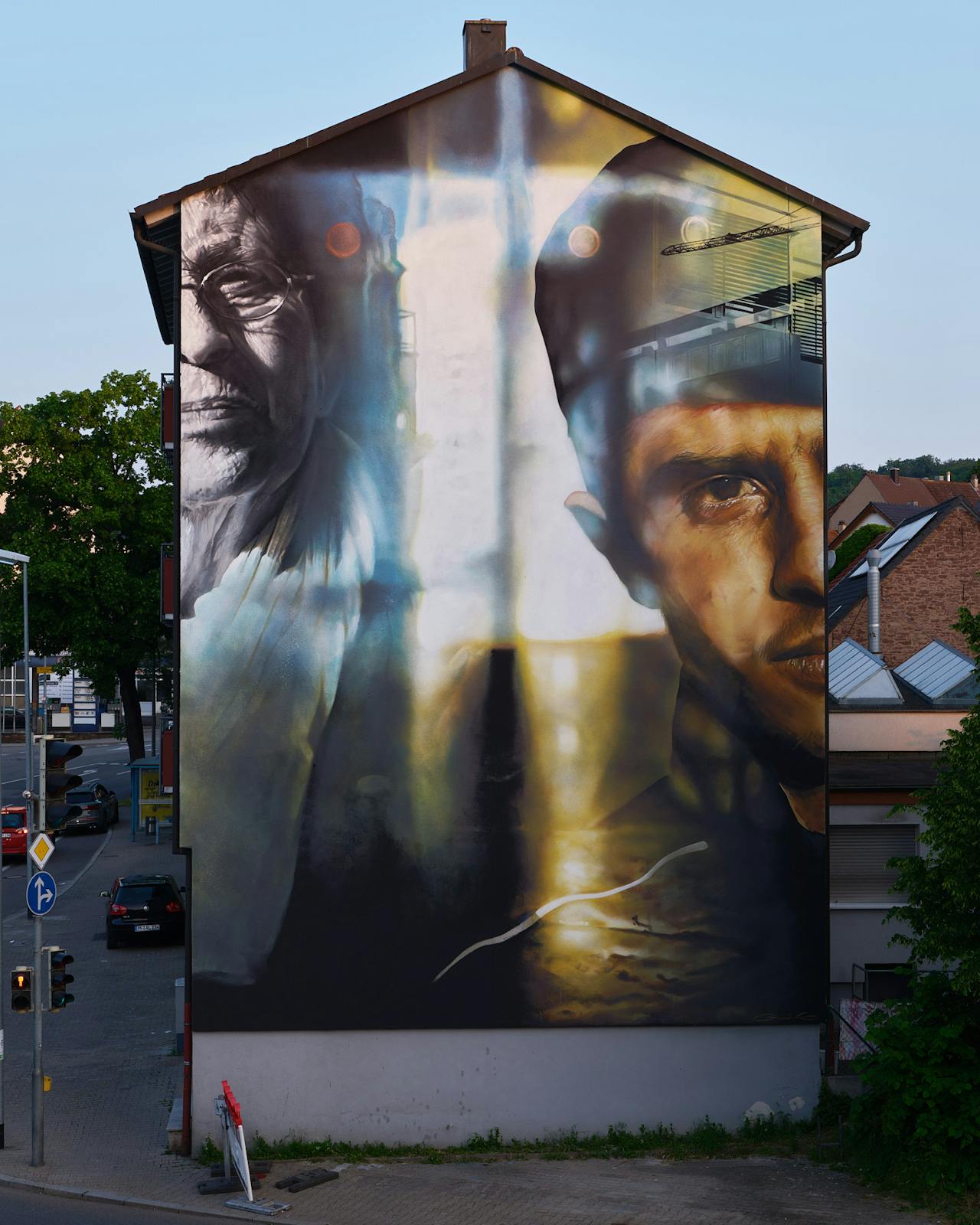
Gold Stadt (City of Gold) conjures thoughts of destruction and...
Bookbinders in Exarcheia
Exarcheia, Athens, Greece, 2021
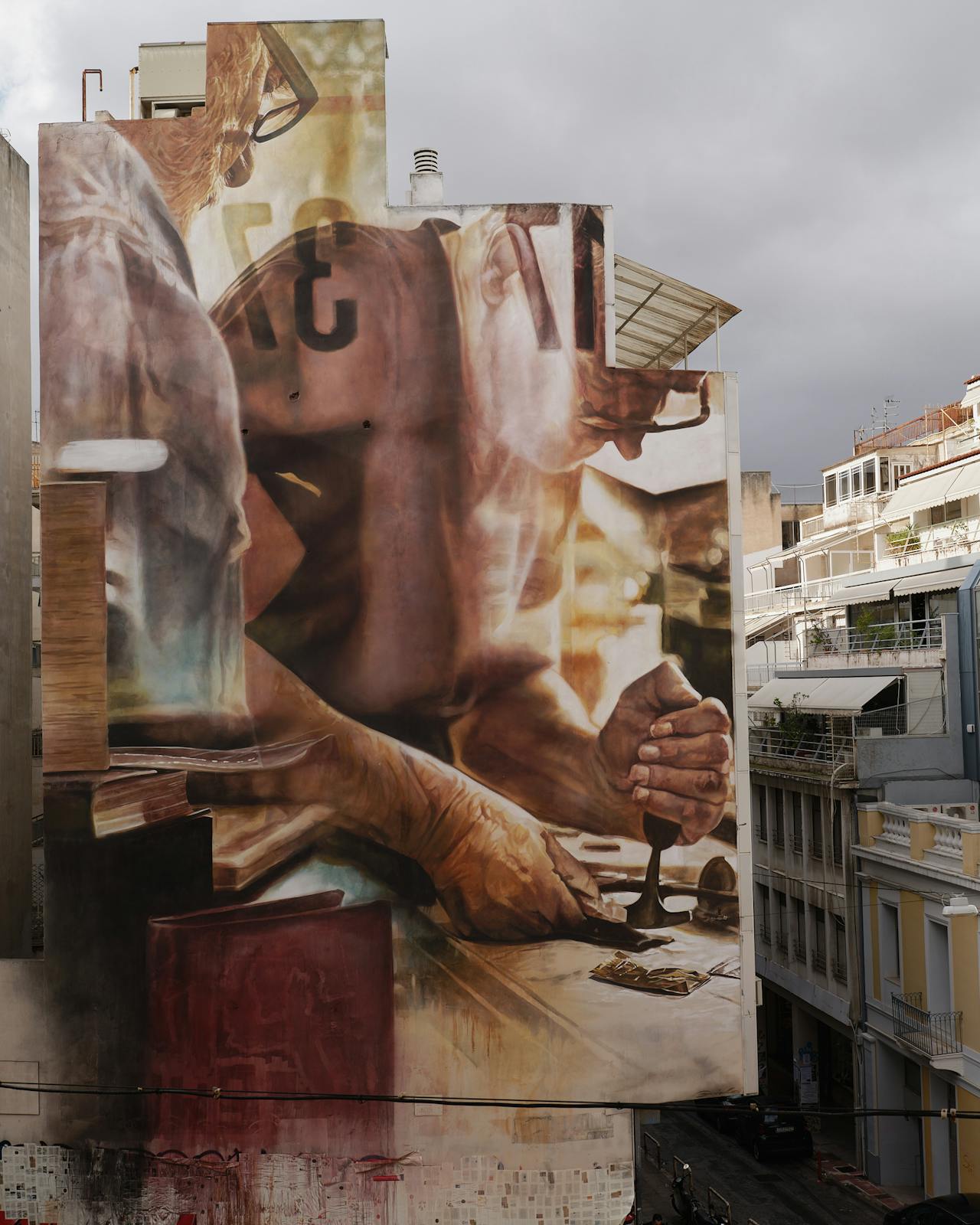
This work explores the collective identity of Exarcheia, a central...
YYC Bump
Calgary, Canada, 2019
Exploring the shared iconographic relationships and cultural usage...
Hold Water I
Azraq, Jordan, 2019
Installed on a water tower in the small community of Azraq, Jordan,...
Southern Cross University
Gold Coast, Australia, 2018
In early 2018 I was invited to create a mural at the Gold Coast...
Solar de Samaniego
Laguardia, Spain, 2016
Commissioned by Solar de Samaniego winery in the wine producing...
Melbourne Polytechnic
Melbourne, Victoria, Australia, 2017
This work visually explores the interaction of human stories and...
UPEA Festival I
Helsinki, Finland, 2016
Muistot Unelmien'(Remembering a Dream) Painted in Helsinki Finland...
A Portrait of an Artist: Collaboration with Selina Miles
Grímsey, Iceland, 2015
In August 2015, film director Selina Miles travelled with artist...
Back Alley Gallery
Lismore, New South Wales, 2016
Titled 'Willow' after the subject of the painting this piece was...
Urban Myths
Minsk, Belarus, 2015
In late 2015 I was invited to participate in the Urban Myths...
Lily of the Valley
Kiev, Ukraine, 2015
конвалія (Lily of the Valley) painted as part of CityArt project in...
Akureyravaka
Akureyri, Iceland, 2014
'Painted for Akureyrarvaka Menningarnótt (culture night) in 2014...
